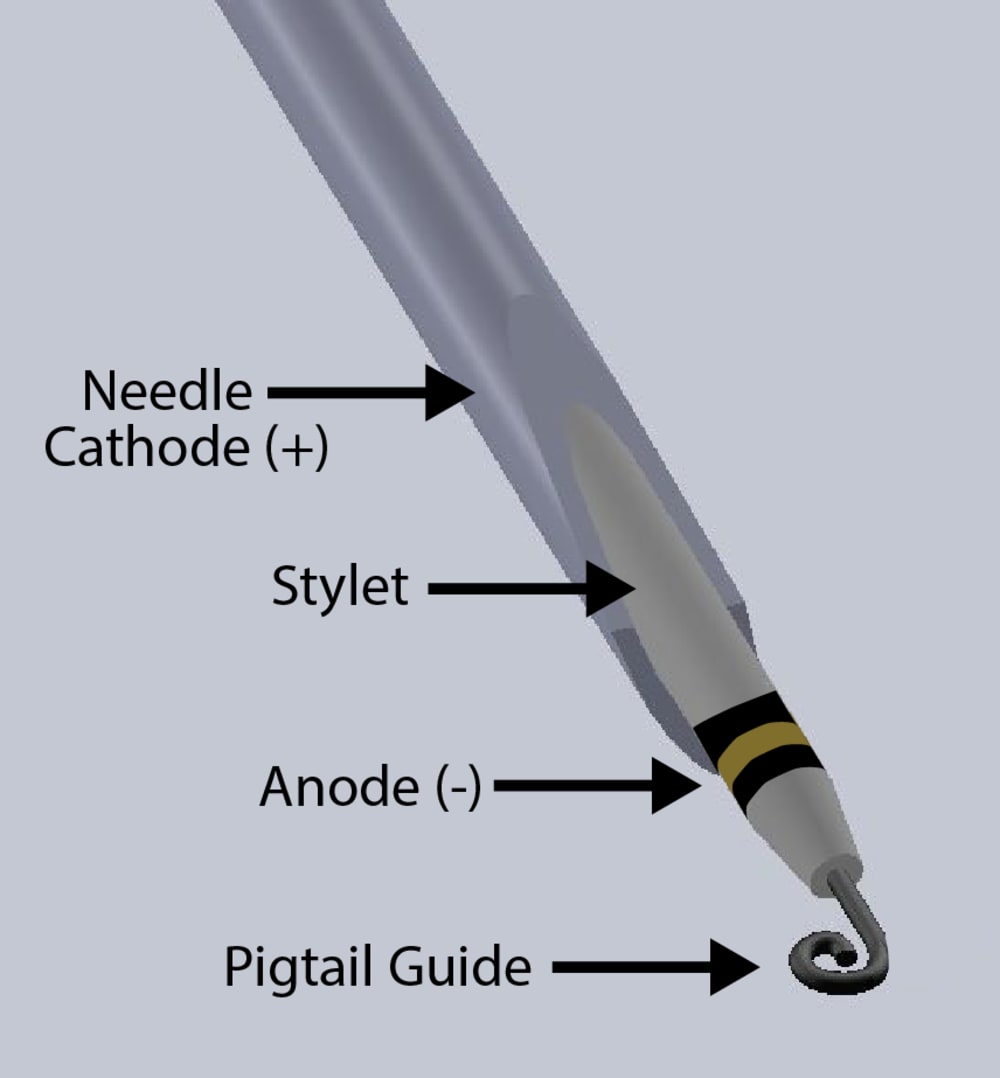
Cardiac tamponade (CT) is a dangerous medical condition caused by the buildup of fluid in the pericardial space (surrounding the heart between the muscle and the outer sac). It increases the pressure on the heart, and reduces its ability to expand and effectively pump blood. CT can lead to severe morbidity and, without treatment, even death. To remove the fluid accumulation, a skilled physician must insert a needle and stylet through the patient’s chest and puncture the outer layer of the pericardial sack without touching the constantly beating heart. When this is done, the heart expands towards the needle as the fluid is drained and the pressure is released. If the needle is inserted too far, chances of the cardiac injury are high which may cause serious adverse effects including thrombus formation, ventricular arrhythmia and perforation leading to death. The procedure has a complication rate of 5-20%. The risk can be mitigated using ultrasound. However, an ultrasound machine is not always available, requires a trained operator, and still does not eliminate the procedure’s risks.
We, a team of medical doctors and scientists, have developed a low-cost tool that will provide immediate feedback upon penetration of the pericardial sac and will automatically prevent the stylet from penetrating the heart, leaving behind a harmless tube to drain the fluid.
This unique device, PeriGuide, relies on data fusion between two independent sensor modalities: pressure and electrical impedance. The device is designed to be low cost, easily operated and integrated with pericardiocentesis kits currently in the market.
The device continuously monitors the electrical impedance across the gap between the needle and the stylet. As the stylet and needle push through tissue, this gap remains empty and the electrical connection is minimal. However, after the sack is penetrated, the fluid rushing out of the pericardium enters this void and significantly changes the measured electrical impedance.
To augment its sensing modality, PeriGuide, also measures the backwards pressure exerted on the needle by the penetrated tissue. As the needle is driven through the chest and into the body, this backwards pressure remains high. However, once the sack is penetrated and the needle enters the fluid, the backwards pressure drops.
It is important to note these two sensing modalities can be susceptible to noise if used independently. However, by merging these two low-cost sensors we create a robust device that is capable of responding automatically to the needle location. The device accomplishes this with a data fusion algorithm implemented in a microprocessor. This allows for the automatic retrieval of the stylet immediately after penetration has been detected to prevent injury to the heart.
Designed for ease of use and low complication rate, PeriGuide can significantly decrease the morbidity and mortality currently associated with pericardiocentesis and CT.
Video
-
Awards
-
 2017 Top 100 Entries
2017 Top 100 Entries
Like this entry?
-
About the Entrant
- Name:Periguide Incorporated
- Type of entry:teamTeam members:Ohad Kott, MD; Mohamed Elmahdy, PhD; Joseph Hollmann, PhD; Kent Lee; Amir Yousef Sajjadi, PhD, Eva Lin
- Software used for this entry:MATLAB
- Patent status:none

